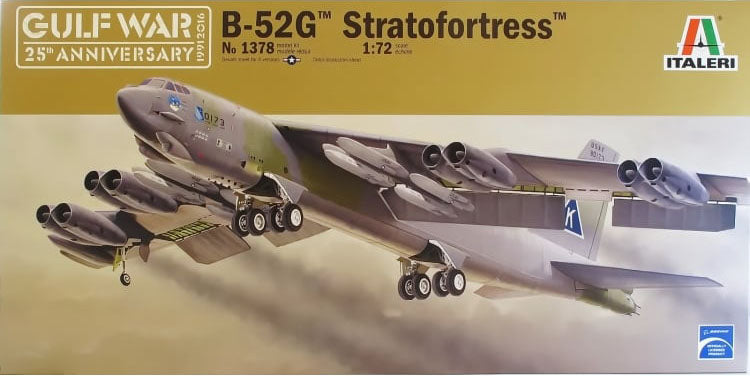Italeri 1:72 Boeing B-52G Stratofortress
Italeri 1:72 Boeing B-52G Stratofortress is backordered and will ship as soon as it is back in stock.
Couldn't load pickup availability
Delivery and Shipping
Delivery and Shipping
We use tracked courier for fast delivery New Zealand wide
Description
Description
1:72 scale plastic assembly kit.
Requires glue and paints to complete.
In 1948, the US Department of Defense placed an order with Boeing to develop a new strategic bomber with a lifting capacity and range exceeding all existing ones, capable of attacking targets anywhere on the globe. The result of this order was the design of the XB-52 aircraft with 20 ° slant wings, equipped with 6 turboprop engines. After obtaining jet engines (or strictly after purchasing their license in Great Britain), it was significantly modified; the skew of the wings was increased to 35 ° and the number of engines was increased to eight, placing them in pairs on the under-wing pylons; the landing gear of the plane was resolved in an unconventional way. In 1949, after presenting the model to the recipient and obtaining its approval, the construction of prototypes began, using the experience gained in the construction and construction of the earlier B-47 Stratojet bomber. The prototype of the B-52 was flown on April 15, 1952. Only three days later, the most dangerous competitor of the B-52 took to the skies; Convair bomber, designated YB-60. The second major competitor was the Douglas 1211-I turboprop. Ultimately, however, the Boeing design was put into production. At the end of the 1960s, the B-52G and B-52H versions were modified by installing a new avionics and adapting them to carry new weapons in the form of AGM-69A missiles, and the engines were also replaced with the newer TF-33-P-3 (8x7563 daN). The still existing B-52 bombers in the early 1980s underwent another modification. It consisted in installing a new avionics and adapting them to carry the AGM-86A / B ALCM cruise missiles by installing revolver ejectors of these missiles in the bomb bay. Between 1991-92, a small number of B-52Hs were armed with AGM-129 ACM missiles. As a defense, the M61 "Vulcan" cannon (20 mm caliber) or 4 coupled MGs (12.7 mm caliber), controlled by a radar; classic nuclear bombs in the bomb chamber; under the wing, high-impact missiles or cruise missiles. Technical data: Maximum speed: 1030 km / h, speed of climb: 31.85 m / s, maximum ceiling 15000 m, maximum range: 16232 km, maximum load capacity: 31500 kg of bombs.
Length: 674mm
Wingspan: 783mm
Skill Level: 4
Decals for 4 variations
Payment & Security
Payment methods
Your payment information is processed securely. We do not store credit card details nor have access to your credit card information.




